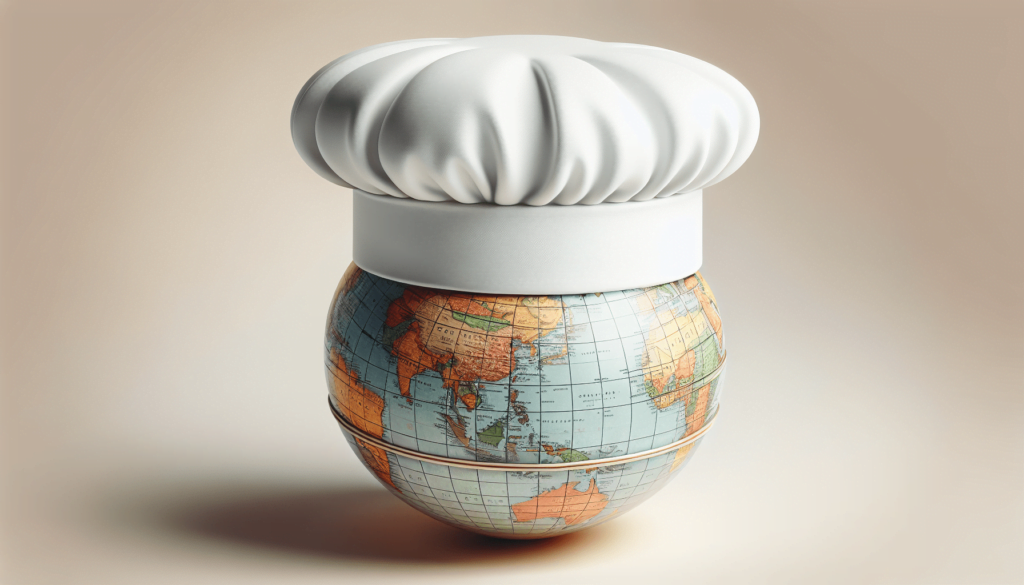Have you ever wondered which country is best for a chef career? It’s a thrilling question that often crosses the minds of culinary enthusiasts and experienced chefs alike. Whether you’re eyeing a bustling metropolis or an exotic destination, choosing the right country to advance your chef career can make a remarkable difference. With so many factors to consider—ranging from culinary traditions to job opportunities and work-life balance—this decision is far from straightforward.

Table of Contents
Why is Choosing the Right Country Important?
Making an informed choice about where to further your culinary journey is crucial. The culinary world is highly dynamic and varies dramatically from one locale to another in terms of cuisine, kitchen culture, and job prospects. But why should you, a burgeoning or experienced chef, care about the country you work in?
Job Opportunities and Growth
A significant factor in choosing the right country is the abundance and variety of job opportunities available. Countries with a thriving culinary scene often provide extensive career growth opportunities, be it in high-end restaurants, casual dining, or even food trucks.
Influence of Culinary Traditions
Some countries are renowned for their culinary traditions and unique contributions to the global food scene. Think of France and its intricate pastries or Japan with its exquisite sushi. Working in such places can enrich your culinary skills and broaden your knowledge, making you a more versatile chef.
Work-Life Balance and Quality of Life
Lastly, quality of life and work-life balance are also crucial. It’s important to consider if the country you’re eyeing offers a conducive environment for both professional and personal growth. A high-stress environment might not be sustainable in the long run, even if the country offers numerous job opportunities.
Historical Context
The Rise of Global Culinary Talent
Historically, chefs were often bound to their home countries, sticking to their native cuisines and traditions. However, globalization has changed all that. The exchange of culinary techniques and ingredients has led to a melting pot of global flavors and the international movement of chefs. This shift has opened up endless possibilities, but it also means that you have to be strategic about where you go.
Current Trends
Popular Destinations for Aspiring Chefs
When it comes to trending destinations for chefs, several countries stand out due to their vibrant food scenes, innovative culinary techniques, and high demand for skilled chefs. But let’s get specific.
France: The Heart of Culinary Excellence
France, often considered the epicenter of classic culinary techniques, continues to attract chefs from around the world. The country boasts a plethora of culinary schools, Michelin-starred restaurants, and a food culture deeply embedded in tradition.
Japan: A Blend of Art and Tradition
Japan offers a unique blend of tradition and modernity. The country is celebrated for its meticulous culinary techniques and presentation. High regard is given to food quality and aesthetics, making it an enticing option for those with a keen eye for detail.
United States: The Land of Opportunities
The United States, particularly cities like New York, San Francisco, and Los Angeles, offers a diverse culinary landscape. Here, you can find a mix of cuisines from around the world and an abundance of job opportunities in various culinary settings—be it high-end restaurants or innovative food startups.
Italy: A Feast for the Senses
Italy’s rich culinary traditions make it another sought-after destination. From pasta to pastries, Italian cuisine is celebrated worldwide, and understanding its roots and techniques can be incredibly enriching.
Key Concepts and Definitions
Michelin Stars
A Michelin star is a hallmark of fine dining quality and an honor awarded to restaurants for excellence. The star ratings range from one to three stars, with three stars indicating exceptional cuisine that is worth a special journey.
Farm-to-Table
The farm-to-table concept emphasizes sourcing ingredients directly from local farms. This practice ensures freshness and supports local agriculture, becoming increasingly popular in sustainable culinary practices.
Fusion Cuisine
Fusion cuisine blends elements from different culinary traditions to create innovative dishes. This concept has gained traction in global culinary hubs where diverse cultures intersect.

Comparative Analysis
To make an informed decision, let’s analyze different countries by comparing various factors that can impact your chef career.
| Country | Culinary Schools | Job Opportunities | Culinary Diversity | Work-Life Balance |
|---|---|---|---|---|
| France | High | Extensive | Moderate | Moderate |
| Japan | Moderate | Significant | High | High |
| United States | Abundant | Vast | Extensive | Variable |
| Italy | Moderate | Moderate | High | High |
France vs. Japan
France offers numerous renowned culinary schools such as Le Cordon Bleu, enriching your skills with traditional techniques. However, Japan offers a high level of respect for chefs, a unique culinary style, and an excellent work-life balance.
United States vs. Italy
The United States provides vast job opportunities and culinary diversity but often comes with variable work-life balance. Conversely, Italy offers a high quality of life and rich culinary traditions, albeit with moderate job opportunities.
Example Case Studies
Case Study 1: Success in France
Consider the example of Julia Child, who moved to France and trained at Le Cordon Bleu. She became a household name in American cooking, blending her French culinary education with a knack for simplifying recipes for the home cook.
Case Study 2: Creative Spark in the United States
Another example is David Chang, a Korean-American chef who launched his culinary empire in New York. Chang’s innovative approach to fusion cuisine has made waves in the food world, marrying flavors from different culinary traditions.
Impact Assessment
Influence on Career Trajectory
Choosing a country like France can set you on a path of mastering traditional techniques and potentially earning Michelin stars, which are highly valued globally. On the other hand, a country like the United States offers the chance to innovate and create your culinary identity.
Lifestyle and Personal Growth
Working in Japan or Italy might offer more balanced lifestyles and an enriching cultural experience. These factors can contribute to long-term job satisfaction and personal well-being.
Future Directions and Implications
Predictions for the Future
Given the rapid pace of technological advancements and globalization, the culinary landscape is likely to become even more interconnected. Countries with a robust digital infrastructure may offer new opportunities through cooking shows, online classes, and virtual restaurants.
Implications for the Industry
The diversification of job roles within the culinary world—such as food photography, food writing, and culinary tourism—is set to expand. Chefs who are adaptable and willing to explore these new avenues may find themselves at the forefront of industry innovation.
Conclusion
To sum up, each country offers unique benefits and challenges for aspiring and seasoned chefs alike. For those seeking a deep dive into traditional culinary arts, France may be an ideal choice. If innovation and variety are more your style, the United States could offer the dynamic environment you’re searching for. Conversely, Japan and Italy provide a balanced approach with enriching cultural experiences and solid culinary reputations.
What about you? Which factors weigh most heavily in your decision as you contemplate this exciting career move?
Feel free to look up more information to get a deeper understanding and see how different countries can offer unique opportunities tailored to your culinary ambitions.
5 Best Countries to Study Culinary Arts Abroad
Culinary Exploration: Embarking on International Food Adventures
